With email marketing being an essential component of most businesses’ overall marketing strategy, choosing the right email marketing platform is a crucial decision.
Flodesk and Mailchimp are two of the most popular choices, each with their own strengths and weaknesses, and in this Flodesk vs Mailchimp comparison article, we will evaluate both platforms across key criteria like market position, ease of use, features, website performance, pricing, reviews, and reputation.
Our goal is to provide comprehensive insights to help entrepreneurs and small business owners determine which solution best fits their unique needs and budget so they can run successful email marketing campaigns. Using our defined criteria, we will highlight the core differences between Flodesk and Mailchimp to help you make an informed decision when choosing an email marketing platform.
1. Understanding the Basics
Founded in 2019 by Martha Bitar and Rebecca Shostak, Flodesk is a relatively new player in the email marketing space. Despite its youth, Flodesk has quickly gained popularity, especially among small businesses and startups. It currently has over 50,000 users.
Mailchimp, on the other hand, has been around since 2001. Created by Ben Chestnut and Mark Armstrong, Mailchimp is one of the oldest and most established email marketing platforms. It boasts over 14 million users and 300,000 paying customers.
Due to its long-standing presence and wide user base, Mailchimp occupies a leading position in the email marketing industry. Flodesk, though rapidly growing, still has a smaller market share compared to veterans like Mailchimp.
Both platforms have active social media presences and online communities:
Joining these groups can provide useful insights from current users of each platform.
2. Features and Functionality
With so much riding on email marketing execution – from brand messaging to lead generation and sales – picking the platform that aligns with your business goals and capabilities is imperative for success.
Automation
Flodesk
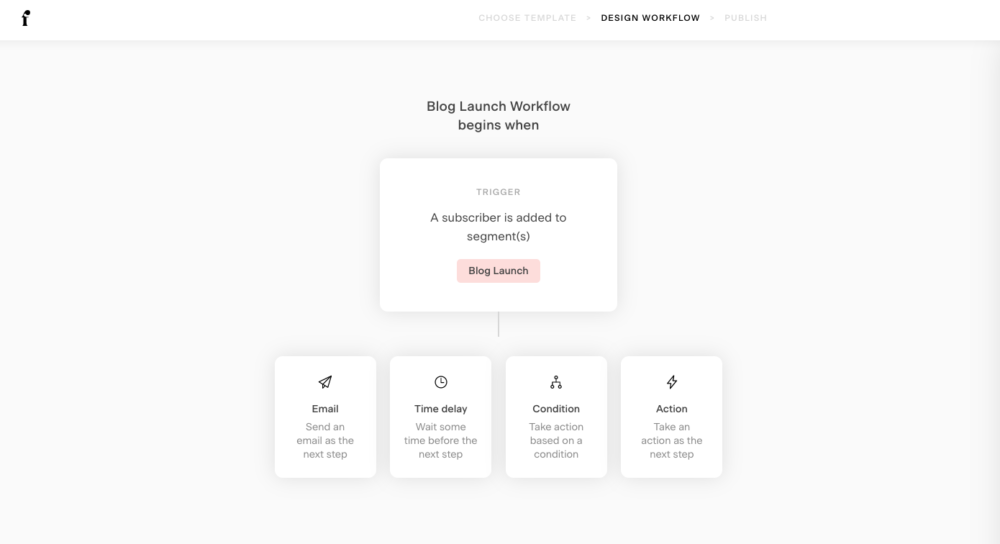
Flodesk enables users to create automated email campaigns based on subscriber actions and triggers. You can set up welcome campaigns to onboard new subscribers, cart abandonment sequences for e-commerce stores, RSS-to-email automation, and more.
With Flodesk’s visual campaign builder, you can create multi-step workflows with conditional logic. For example, you can send different emails if a subscriber clicks a link versus if they don’t engage with your first message.
Other key automation features include:
- Pre-built templates for common automation like welcome series, birthday messages, win-back campaigns, etc.
- Event-based triggers like email opens, link clicks, form submissions, e-commerce transactions
- Scheduling options to set sending time, date, delays, and recurring automation
- Segmentation with tags and custom fields to target automation
- A/B testing capabilities
Overall, Flodesk provides a solid set of tools to automate engagement based on user actions. The drag-and-drop workflow builder makes it easy to create personalized experiences.
Mailchimp

Mailchimp also enables automation through its campaigns feature. You can set up sequences like welcome series, abandoned browse campaigns, weekly digests, and more.
Key automation features include:
- Visual campaign builder to configure multi-step workflows
- Triggers for things like new subscribers, abandoned carts, profile updates, inactivity
- Scheduling options for sending time and recurrence
- Segmentation by groups, previous activity, e-commerce data
- A/B testing to optimize campaign performance
- RSS and API triggers for integrating with other apps
- Pre-built campaign templates for common automation
Mailchimp provides robust options for automation. The ability to track subscriber behavior and respond with timely, personalized content is valuable.
Winner: Tie
Both Flodesk and Mailchimp offer excellent automation capabilities to fuel your email marketing strategy. They enable users to easily set up triggered messaging based on subscriber actions. While Mailchimp likely has more advanced options, Flodesk provides the essential tools most small businesses will need. For automation power, it’s a tie between the two platforms.
Email Templates
Flodesk

Flodesk provides hundreds of professionally designed email templates that users can customize for their brand. Templates are organized into categories like Welcome Emails, Promotions, Holidays, and more.
Key features of Flodesk’s email templates include:
- Professionally designed mobile-responsive templates
- Customizable template editor to add images, text, buttons
- Templates for welcome series, promotions, holidays, announcements
- Hundreds of free templates available in the template gallery
- Options to build templates from scratch
- Templates can be saved and reused for other campaigns
Overall, Flodesk makes it easy to create polished, branded email templates with minimal design experience required. The template editor simplifies customization.
Mailchimp
Mailchimp also provides professionally designed email templates that users can customize. There are over 250 free templates available.
Key features of Mailchimp’s email templates:
- Mobile-optimized templates in a variety of categories
- Drag-and-drop template editor to modify templates
- Ability to create and save custom templates
- Free and paid template options are available
- Templates for common campaigns like welcome series, announcements, newsletters
- Some more advanced custom code customization is available
Mailchimp’s templates enable users to build nicely designed emails that represent their brand. The template editor provides flexibility.
Winner: Flodesk
For email templates, Flodesk wins out over Mailchimp. Flodesk simply provides more free, professionally designed templates to choose from, making it one of the best free email marketing tools on the market right now. Their template editor may also be a bit simpler for novices to use when customizing the templates. Both platforms make email templating easy, but Flodesk’s selection gives them an edge.
Segmentation
Flodesk
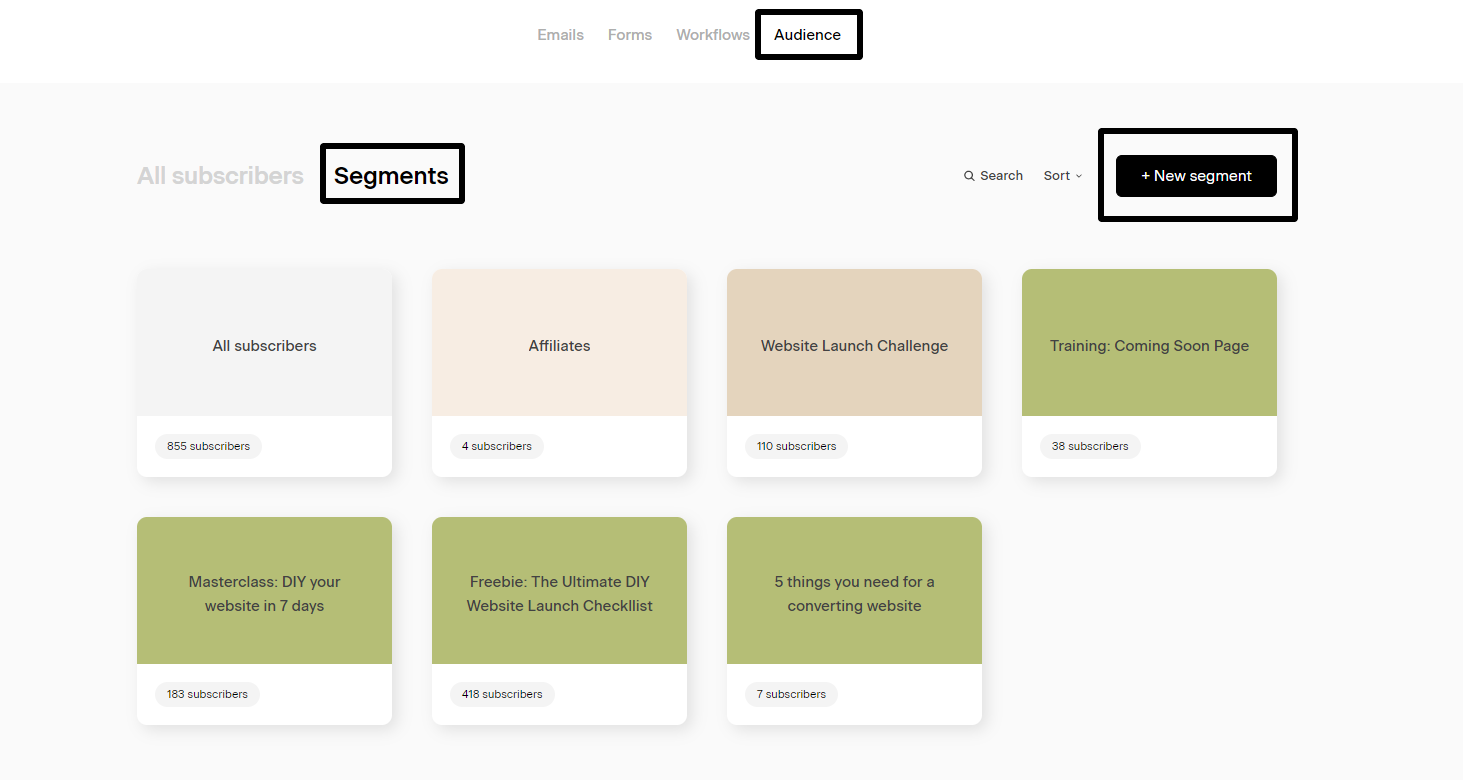
Flodesk provides several options to segment your subscriber list and target specific groups with tailored messaging.
Key segmentation features include:
- Tags to manually group subscribers based on preferences, interests, behaviors
- Custom fields to create customized segments based on subscriber data
- Integration with e-commerce platforms to segment by customer data
- Ability to combine multiple criteria to create segments
- Segmented automation and email sends based on tags and fields
- Saved segments for easily reusing customized groups
Flodesk makes it relatively easy for beginners to create segmented subgroups from their subscriber list. The tag and custom field options provide flexibility.
Mailchimp

Mailchimp also enables advanced subscriber segmentation capabilities.
Key features of this powerful email marketing tool include:
- Ability to create groups manually or based on subscriber activity
- Tagging subscribers for flexible segments
- Custom fields to track data for tailored segments
- Option to segment by campaign activity, location, purchase history
- Complex or multilayered segments using “and” and “or” logic
- Saved segments for quickly accessing frequently used groups
- Segmented automation, emails, and analytics
Overall, Mailchimp provides very robust segmentation options to target subscribers. The ability to create complex segments gives high flexibility.
Winner: Mailchimp
For subscriber segmentation and targeting, Mailchimp is the winner over Flodesk. Mailchimp simply provides more advanced options for creating highly customized, complex segments using various subscriber data points. For beginners, Flodesk has sufficient segmentation capabilities, but Mailchimp is more powerful.
Analytics
Flodesk
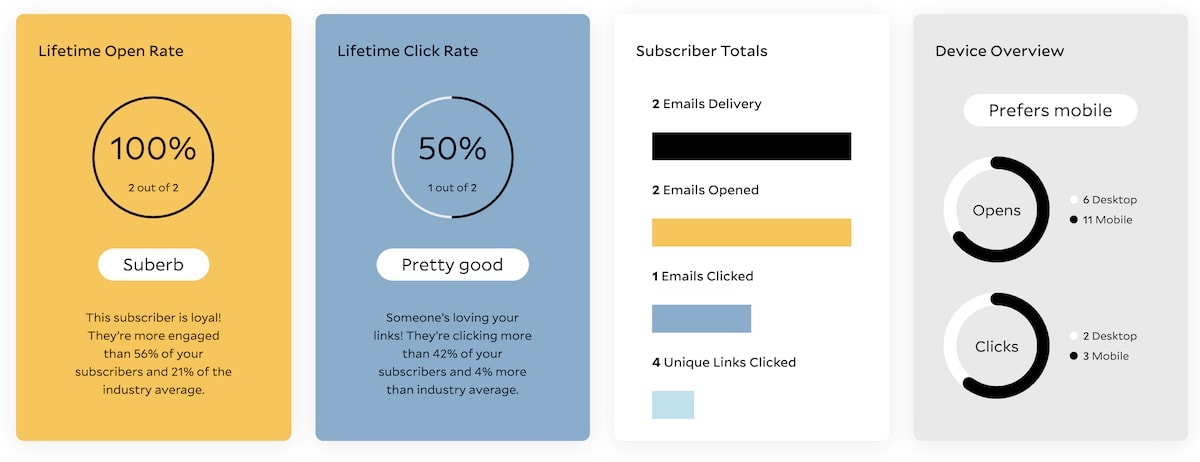
Flodesk provides solid email analytics to help users track and optimize their campaigns. The platform offers campaign reports showing important metrics like open rates, clickthrough rates, and unsubscribe rates.
This enables you to see how well your emails are performing. Flodesk also has top content reports to view your best-performing emails. Link and asset tracking shows subscriber engagement with links and images in your emails.
For A/B testing, Flodesk provides analytics to compare the performance of different campaign versions. The dashboard gives an overview of key email stats, subscriber growth trends, and top content. Finally, users can export campaign reports as CSV or PDF files for further analysis.
Mailchimp

Mailchimp has powerful analytics both for email and complete marketing efforts. For email specifically, Mailchimp offers campaign reports on critical performance metrics like deliverability, open rates, and clickthrough rates.
The platform also provides automation and A/B testing analytics to optimize those workflows. You can view engagement tracking by subscriber segments to see how different groups respond. E-commerce reports offer data on revenue, ROI, and customer purchases generated from email campaigns.
In terms of audience insights, Mailchimp gives information about subscribers and their on-site/email activity. As a marketing CRM, Mailchimp enables tracking of your entire sales funnel performance. Users can build customized dashboards to monitor key performance indicators. Finally, the ability to export reports to other platforms allows further analysis.
Winner: Mailchimp
When comparing these two email marketing services, Mailchimp is the clear winner over Flodesk in terms of email analytics. The email marketing software provides more advanced analytics capabilities, especially for those doing e-commerce or full marketing automation. Flodesk still offers solid campaign analytics, but Mailchimp edges them out with deeper insights into subscriber engagement and marketing ROI across channels.
Unique Features
Flodesk
One unique feature Flodesk offers is multi-user collaboration. This allows multiple team members to access and work within the same account. The collaboration capabilities enable users to add editors, authors, analysts, and publishers, and custom roles and permissions can be defined for each team member.
Notifications alert users when someone takes an action like publishing a campaign. Within campaigns, comments and task assignments facilitate teamwork. A central asset manager makes it easy to share images, templates, and content across the team. This collaboration functionality makes Flodesk ideal for teams managing email marketing together.
Mailchimp

A standout feature Mailchimp offers is automation based on customer journey stages. This allows sending emails triggered by progression through a defined workflow. Users can map out the purchase process from initial awareness to retention.
Emails can then be configured to deploy at each stage when the subscriber moves through the journey based on their on-site activity and engagement. This helps guide customers through the sales funnel by providing timely, relevant content.
Analytics provide insight into how subscribers are progressing through the stages. Journey stage automation helps create personalized, sequenced messaging tailored to each phase.
Winner: Flodesk
For unique features, Flodesk wins for its collaboration capabilities. The ability to add multiple users and define roles is valuable for growing teams. Mailchimp has robust journey automation but collaboration helps set Flodesk apart as a platform. This differentiator gives Flodesk the advantage.
3. Ease of Use
Flodesk

Flodesk has a clean, modern user interface that is visually appealing. The dashboard layout provides quick access to key tasks like creating campaigns, segmenting lists, and viewing reports.
For beginners, Flodesk’s email editor and visual workflow builder make creating campaigns intuitive. The platform guides you through each step including designing templates, setting up automation, and sending test emails.
The overall user experience is smooth. Pages load quickly and menus are well-organized so features are easy to find. Tasks like adding subscribers can be done very quickly.
The learning curve is relatively minimal. Flodesk provides tips and training resources including videos and guides. Most users can get comfortable with the platform within a couple of hours.
Mailchimp

Mailchimp also has an easy-to-use interface. The dashboard displays usage statistics, popular reports, and shortcuts for common tasks.
For new users, Mailchimp makes getting started simple by prompting you to set up your first campaign upon login. The email builder and automation workflow interfaces are visually straightforward.
The Mailchimp user experience is seamless. The platform is speedy and pages transition smoothly without lag or delays. The layout is clean and consistent across sections.
The learning curve is low. Extensive training resources like videos, articles, and webinars help users rapidly pick up skills. Most find Mailchimp intuitive within just an hour or two.
Winner: Tie
Both Flodesk and Mailchimp are very easy to use, with clean interfaces, guided onboarding, and minimal learning curves. They each provide a smooth user experience. For overall usability and user-friendliness, each email marketing service has a lot to offer, which is why they are evenly matched.
4. Email Deliverability
Flodesk
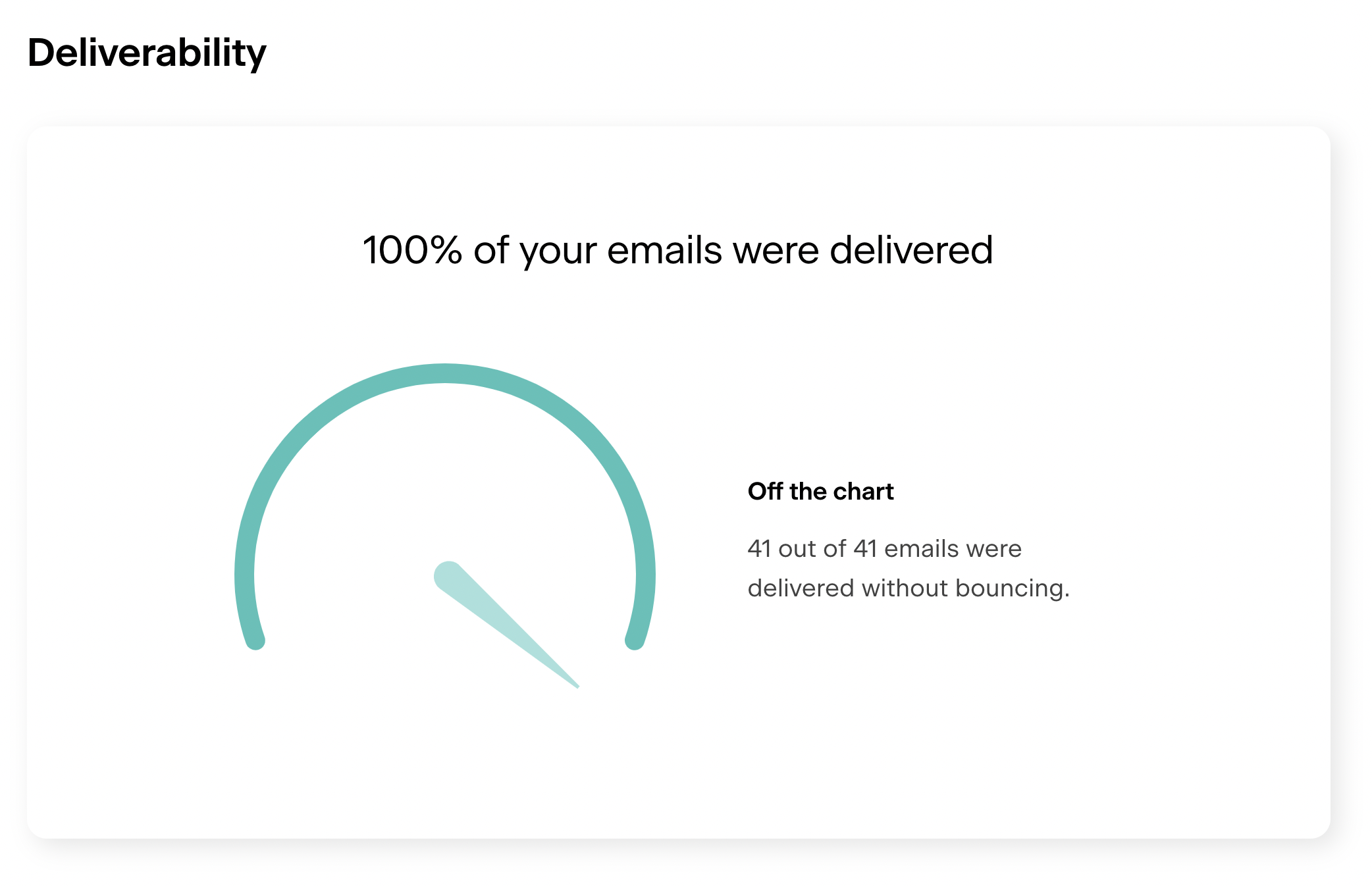
Flodesk has strong email deliverability rates, ensuring your messages reach subscriber inboxes. They monitor ISP’s reputation closely and provide deliverability tips to customers. Specific features that aid deliverability include automatic list cleaning to remove inactive emails, dedicated IPs to protect sender reputation, allowlisting to bypass spam filters, and email authentication like SPF and DKIM to prove legitimacy.
Flodesk also provides deliverability monitoring and reports, spam testing for each campaign, and integrations with major ISPs to improve inboxing. Overall, Flodesk actively optimizes deliverability for customers across their email programs.
Mailchimp

Mailchimp also makes email deliverability a top priority. They have established long-term partnerships with ISPs to maintain trusted sender status. Key deliverability features include a proprietary algorithm combining over 200 factors to maximize inbox placement, shared and dedicated IP options with reputation monitoring, pre-send spam testing and analysis, and email authentication like SPF, DKIM, and DMARC.
Mailchimp also provides allowlisting and domain warmup for new accounts, delivery metrics and reporting, and ongoing ISP relationship management. Overall, Mailchimp leverages decades of experience to achieve strong inbox placement.
Winner: Mailchimp
These two popular email marketing platforms have much to offer in terms of email deliverability, but Mailchimp edges out Flodesk thanks to its wide range of built-in features. Mailchimp’s long history and volume of customers have enabled them to develop very sophisticated proprietary deliverability capabilities. Their established ISP relationships also give them an advantage in reputation and trust for inbox placement. Both are strong, but Mailchimp wins for deliverability.
5. Customer Support and Community
Flodesk
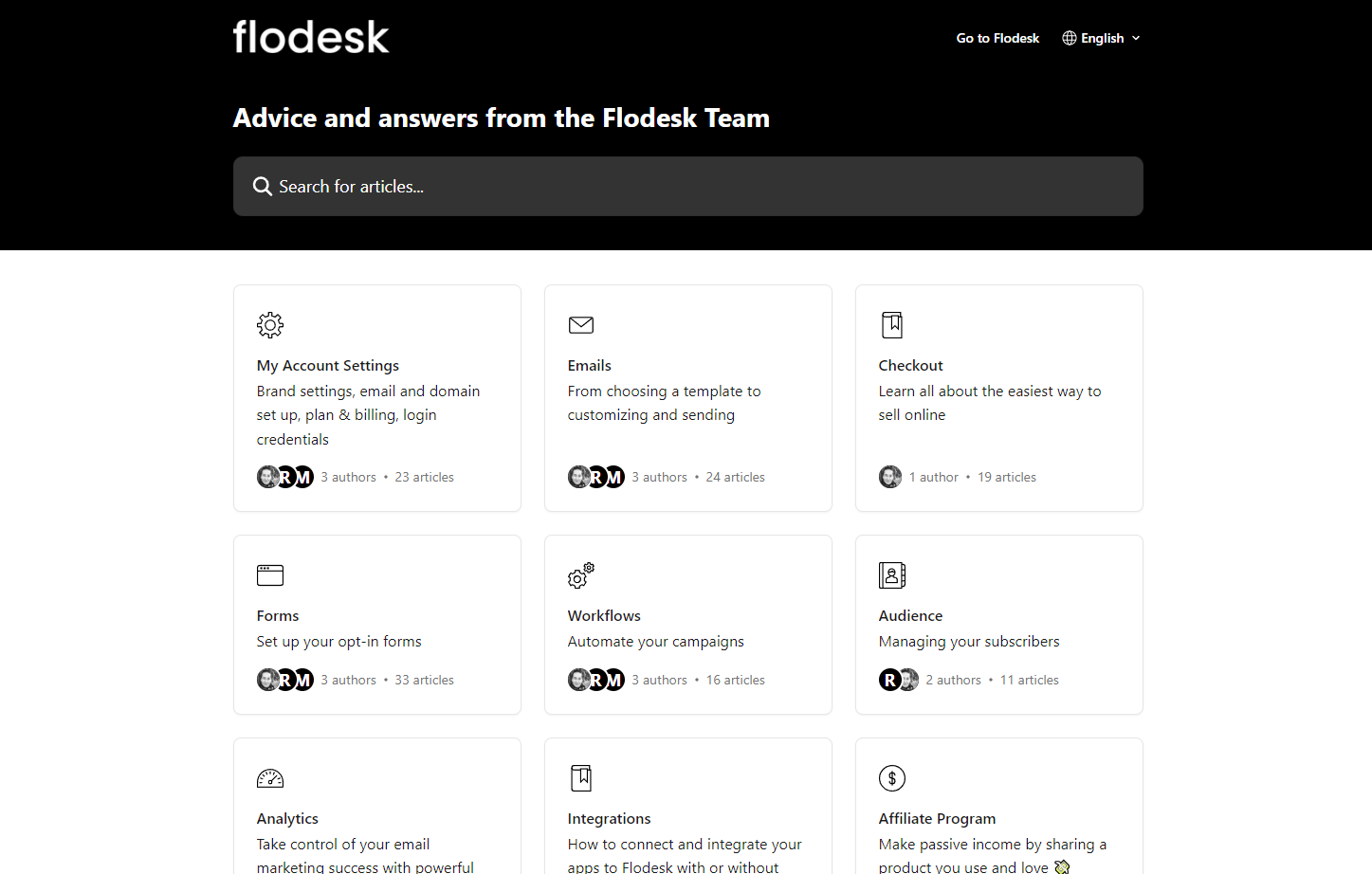
Flodesk provides solid customer support options including email support, live chat, phone support, and an online knowledge base. For non-urgent inquiries, users can get assistance via email and in-app messaging with reasonable response times.
During business hours, Flodesk offers live chat with agents for faster responses. For more urgent issues, users have the option to call for direct phone support. Flodesk also has a searchable knowledge base containing articles, guides, and videos to address common questions. Users can also connect with one another through the active user community forum on Flodesk’s website.
Flodesk does not have an official Facebook group, but the forums enable peer-to-peer help. Overall, they provide responsive support across multiple channels.
Mailchimp
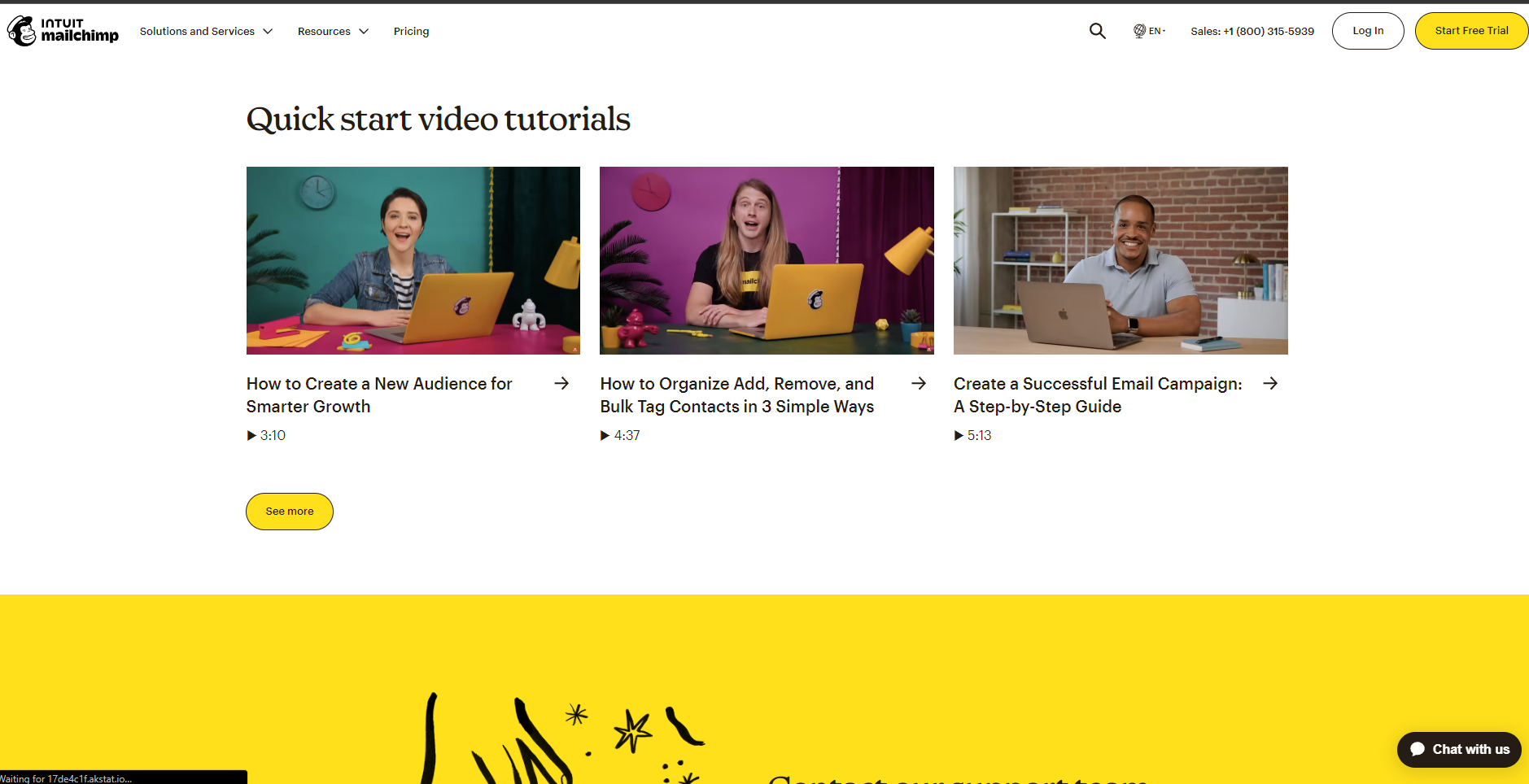
Mailchimp also offers email support, chat, phone, resources, and community options for customer assistance. For questions or issues, users can reach out via email and in-app messaging support. Live chat with agents is available during business hours for quicker responses when needed. Mailchimp provides priority phone support for paying users with urgent needs.
They also have an extensive knowledge base and training materials to address common topics. Active user groups on Facebook, like [this group], enable Mailchimp users to help each other.
Winner: Tie
Both Flodesk and Mailchimp offer a wide range of customer support resources from email and chat to phone and community forums. They are evenly matched in providing help when users need it through various methods. For overall customer support and community, Flodesk and Mailchimp are tied.
6. Integrations
Flodesk

Flodesk provides integrations with many popular third-party platforms to expand functionality. Some of their key integrations include CRM tools like Salesforce, HubSpot, and Zoho to sync subscriber data, and e-commerce platforms such as Shopify and WooCommerce to track customer activity.
You also get webinar software like GoToWebinar to add registrants to lists, social media platforms like Facebook to build audiences, analytics tools like Google Analytics to track performance, calendar tools like Calendly to schedule meeting invites, and feedback tools like SurveyMonkey to collect subscriber feedback.
Overall, Flodesk gives users the ability to connect their email marketing to other important business systems.
Mailchimp

Mailchimp also offers hundreds of third-party integrations to enhance capabilities. Notable integrations include CRMs like Salesforce and Zoho CRM to sync contacts, e-commerce platforms like Shopify, Magento, and WooCommerce, and analytics providers like Google Analytics and Mixpanel.
You also get social media sites like Instagram and Facebook, live chat tools like Intercom and Drift, webinar software like GoToWebinar and ON24, and survey tools like SurveyMonkey and Typeform.
Overall, Mailchimp enables connecting email efforts to both marketing and business systems across many categories.
Winner: Mailchimp
For integrations, Mailchimp wins over Flodesk. Mailchimp simply offers significantly more integrations across CRMs, e-commerce, analytics, social, surveys, and other categories. While Flodesk has the most popular options, Mailchimp provides far greater depth and breadth of integrations.
7. Pricing
Flodesk

Flodesk uses a flat monthly pricing model based on the number of contacts. Plans range from free for up to 500 contacts to $35/month for unlimited contacts.
Key details on Flodesk’s pricing:
The free plan includes basic features for unlimited subscribers. But if you want features like popup forms, embedded forms, and hosted forms, then you’ll have to upgrade to one of the paid plans.
The e-commerce plan for $24/month includes additional features such as third-party integrations, custom fonts, personalized links, and custom domains.
Flodesk’s flat fee structure makes costs simple and easy to budget.
Mailchimp
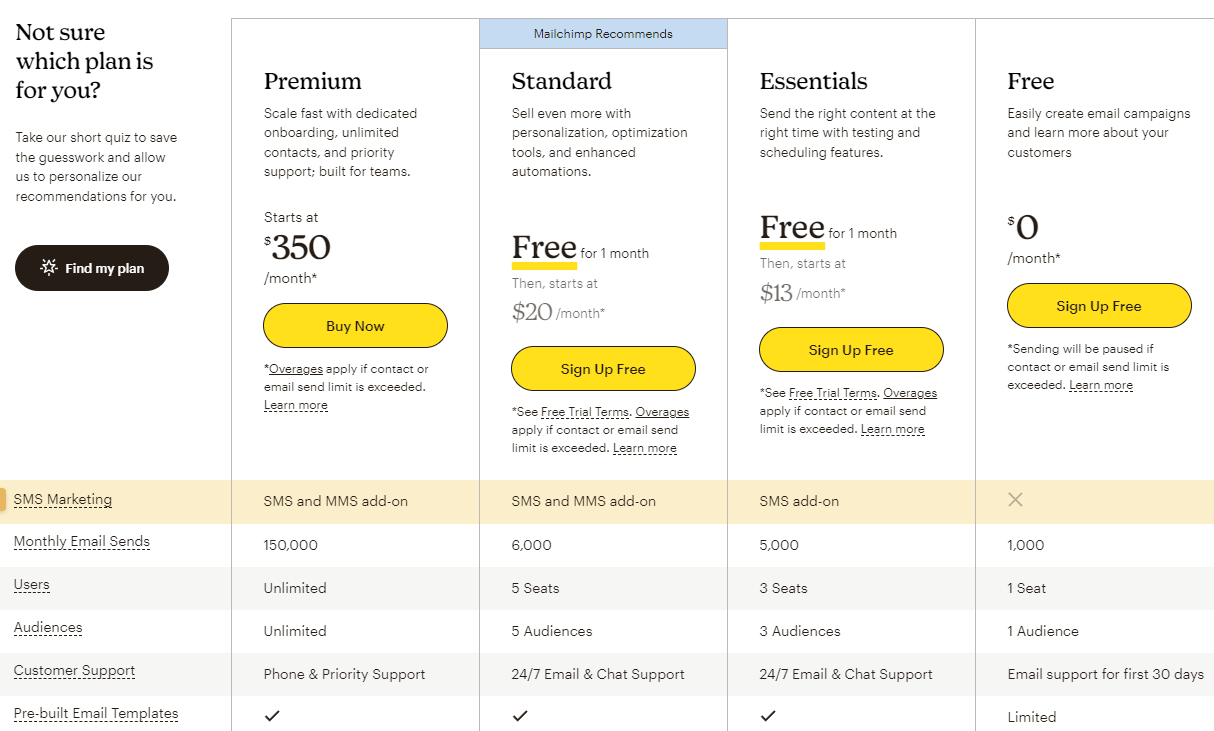
Mailchimp has 3 paid tiers: Essentials at $13/month, Standard at $20/month, and Premium at $350/month billed annually.
Lower tiers are suitable for small businesses. Advanced and Premium add powerful enterprise features like journey builder, workflow automation, and advanced analytics.
The free plan lets you send 1,000 emails per month with basic automation. Overall, Mailchimp offers cost-effective plans.
Winner: Flodesk
For pricing, Flodesk wins over Mailchimp with its simple flat fee structure. Flodesk’s predictable monthly pricing makes budgeting easy and costs don’t fluctuate. While Mailchimp has a free forever option, their paid plans involve variable fees based on usage. Flodesk’s pricing transparency gives them an advantage.
8. Reviews and Reputation
Flodesk
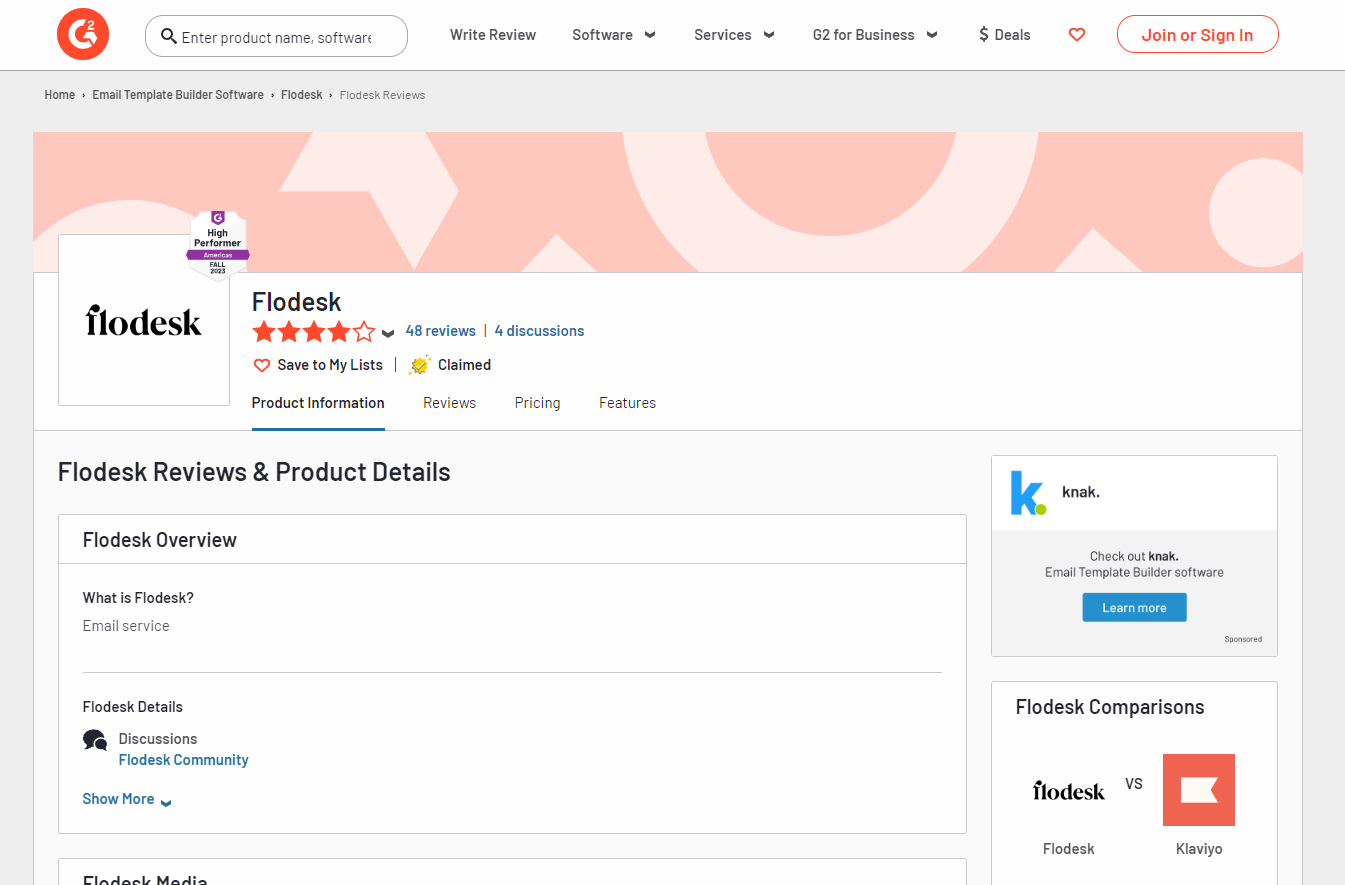
Flodesk earns positive reviews for its ease of use, automation features, and responsive support. Users praise the intuitive drag-and-drop builder and visually appealing templates. The segmentation and tagging capabilities are also popular.
Some downsides mentioned include occasional glitches and a smaller feature set versus competitors. On platforms like G2 and Capterra, Flodesk maintains high ratings.
Mailchimp
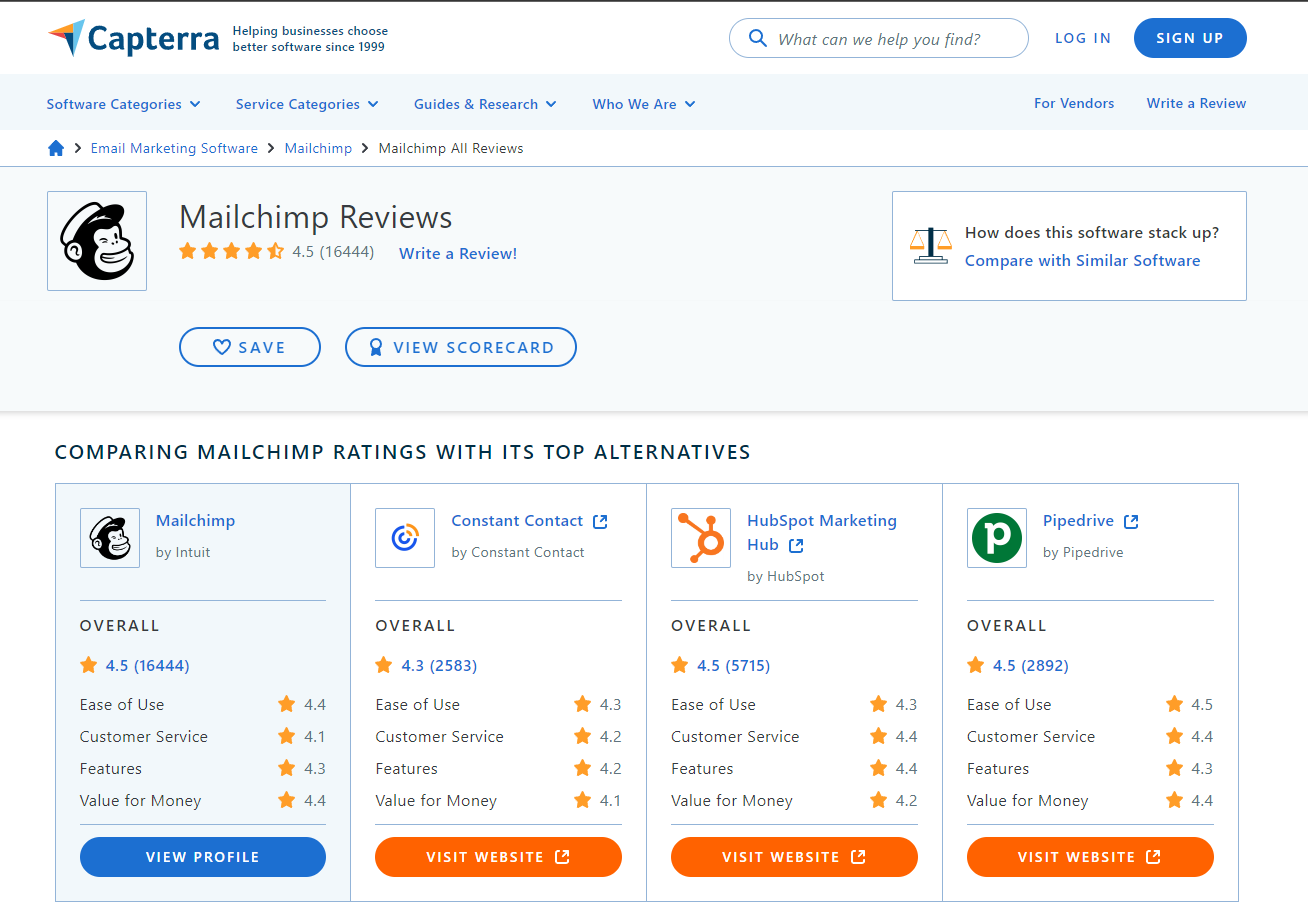
Mailchimp is very highly reviewed for its extensive features, reliability, and excellent analytics. Users highlight the user-friendly interface, automation workflows, and integration ecosystem. The deliverability rates and customer support also receive praise.
Negative feedback is mostly around complex pricing and difficulty customizing for advanced users. But most reviews rate Mailchimp very favorably. The platform averages around 4.7 out of 5 stars on G2, Capterra, and other sites.
Winner: Mailchimp
Based on in-depth user reviews, Mailchimp narrowly beats Flodesk in terms of overall reputation. While both earn glowing reviews, Mailchimp maintains slightly higher average ratings across software review platforms. The breadth of features, deliverability rates, and quality analytics appear to stand out in many Mailchimp users’ experiences. But Flodesk also wins over fans with its ease of use and automation.
9. FAQ’s
Flodesk FAQs
- What types of email campaigns can I create in Flodesk?
You can create all standard campaign types like welcome series, newsletters, promotions, etc. Flodesk also makes it easy to set up automated workflows triggered by subscriber actions. - Does Flodesk have e-commerce features?
Yes, Flodesk integrates with e-commerce platforms to track customer data. You can segment contacts by purchase history and set up post-purchase automation. - How do I get the emails I create to look professional?
Flodesk provides hundreds of professionally designed templates you can customize with your own branding. No coding or design experience is needed. - What analytics does Flodesk provide?
You get standard campaign analytics on opens, clicks, etc. Flodesk also offers engagement tracking by contact segment and A/B testing capabilities. - Does Flodesk have a free trial?
Yes, Flodesk offers a 14-day free trial to test out the platform. You get full access to features during the trial.
Mailchimp FAQs
- Can I connect my CRM to Mailchimp?
Yes, Mailchimp offers integrations with all major CRM platforms to sync contacts and data. - How do I segment my audience in Mailchimp?
You can create groups based on user attributes and behaviors. Mailchimp also enables you to build complex segments using filters and tags. - What deliverability tools does Mailchimp offer?
Mailchimp has proprietary deliverability technology, IPS partnerships, and authentication protocols like SPF and DKIM to maximize inbox placement. - Does Mailchimp offer multilingual campaign support?
Yes, Mailchimp lets you localize campaigns into multiple languages to reach international audiences. - How do I get started with Mailchimp?
Mailchimp offers an intuitive drag-and-drop editor to help you create your first campaign quickly. Useful tutorials are available as well.
Final Thoughts
Choose Flodesk if…
Flodesk is a great choice if you want an easy-to-use platform with powerful automation and clear pricing. The intuitive drag-and-drop editor makes creating campaigns straightforward even for beginners. Robust tagging and segmentation simplify personalizing engagement.
Flodesk’s flat-fee pricing provides predictable costs for budgeting. Overall, Flodesk is ideal for small businesses seeking an affordable, user-friendly email marketing solution.
Choose Mailchimp if…
Mailchimp is a superior option if you need advanced features, intricate automation, and maximum deliverability. Experienced email marketers will appreciate Mailchimp’s sophisticated capabilities. The extensive integrations enable connecting email to CRM and e-commerce systems.
Mailchimp’s deliverability prowess ensures your emails reach inboxes. The platform scales to handle huge volumes of contacts and emails. Mailchimp suits growing businesses ready for enterprise-grade email marketing.
You may also be interested in checking out some Mailchimp alternatives to help with the evaluation process.
Choosing the right email marketing platform is critical for executing successful campaigns and engagement. Be sure to select the solution that best aligns with your business needs, capabilities, and budget. Feel free to ask any questions in the comments if you need help determining if Flodesk or Mailchimp is the better fit!
